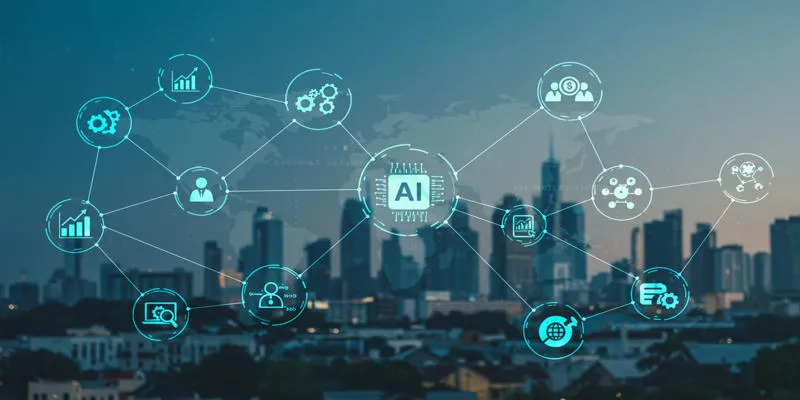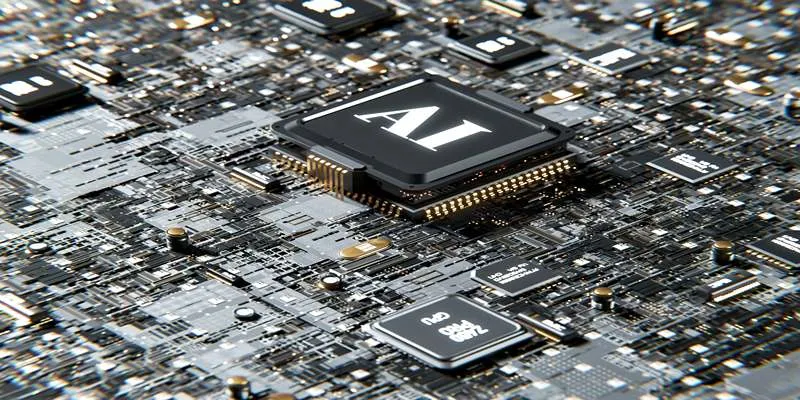The importance of cybersecurity has reached a critical point as cyber threats continue to increase exponentially. Automated systems have enhanced protection capabilities, detecting threats faster and responding instantly to prevent attacks. Artificial Intelligence (AI) uses machine learning to identify security patterns more effectively than traditional human-operated methods.
Why AI Automation is Essential for Cybersecurity?
 Organizations
must automate cybersecurity procedures to stay ahead of cybercriminals who use
AI to launch sophisticated attacks. AI automation is crucial for cybersecurity
due to the following key factors:
Organizations
must automate cybersecurity procedures to stay ahead of cybercriminals who use
AI to launch sophisticated attacks. AI automation is crucial for cybersecurity
due to the following key factors:
- Faster Detection of Cyber Threats – AI can scan massive amounts of data in seconds, identifying potential threats that would take humans hours or days to detect.
- Reduced Human Errors – Manual security monitoring is prone to mistakes, while AI follows strict algorithms that minimize errors.
- Improved Incident Response – AI-powered security systems take immediate action when detecting an attack, limiting damage.
- Cost-Effective Security Management – Automating security tasks reduces the need for large security teams, lowering operational costs.
With these benefits in mind, let’s explore which cybersecurity processes should be automated to maximize security.
1. Automated Threat Detection for Faster Cybersecurity Response
The primary goal for security teams is to detect cyber threats before they cause damage. AI enhances threat detection by recognizing threats that do not trigger traditional static rules.
AI uses machine learning algorithms to study data and detect anomalies representing potential cyber threats. This automated learning feature allows it to recognize previously unseen dangers that typical protection systems might miss. This approach actively eliminates risks of breaches, ransomware, and malware attacks.
AI-Powered Threat Detection Technologies
- Machine Learning Algorithms – These algorithms identify unusual patterns in network traffic and flag potential threats.
- Behavioral Analytics – AI analyzes user behavior and detects suspicious activities, such as unauthorized logins or unusual file access.
- Automated Security Monitoring – AI constantly scans network traffic and identifies malicious activities in real time.
Automating threat detection improves security by reducing false positives and enabling faster responses to cyberattacks. Businesses can rely on AI to detect and stop threats before they become major security incidents.
2. Automated Incident Response for Immediate Action
Cybersecurity incidents can escalate quickly if not addressed immediately. Manual incident response takes time, allowing cybercriminals to exploit vulnerabilities and steal sensitive data. AI-powered systems take instant action when threats are detected, minimizing damage.
How AI Responds to Cybersecurity Threats
- Blocking Malicious IP Addresses – AI identifies and blocks IP addresses associated with cybercriminal activities.
- Isolating Infected Devices – If a system is compromised, AI can isolate the affected device to prevent the spread of malware.
- Restricting Access to Sensitive Data – AI can automatically lock down access to critical files during an attack.
AI-Powered Security Automation Tools for Incident Response
- Security Orchestration, Automation, and Response (SOAR) – Automates incident response workflows, reducing human intervention.
- Endpoint Detection and Response (EDR) – Uses AI to detect threats on devices and take immediate action.
- AI-Driven Firewalls – AI-powered firewalls automatically detect and block suspicious network traffic.
By automating incident response, organizations can neutralize threats before causing significant damage, protecting sensitive data and minimizing downtime.
3. AI-Powered Phishing Detection and Prevention
Phishing attacks are among the most common cyber threats, tricking users into revealing personal information or login credentials. AI enhances phishing detection by analyzing email patterns, identifying suspicious messages, and blocking phishing attempts before they reach users.
How AI Prevents Phishing Attacks
- Analyzing Email Content – AI scans email text, links, and attachments to detect phishing attempts.
- Identifying Fake Websites – AI compares website URLs with known phishing sites and warns users before they enter login details.
- Blocking Suspicious Messages – AI-powered email filters automatically remove phishing emails from inboxes.
AI-Powered Phishing Protection Tools
- AI Email Security Systems – Filters and detects phishing attempts in real time.
- Automated Web Security Extensions – Warns users about dangerous websites before they enter sensitive information.
- AI Chatbots for Cybersecurity Training – Educates employees on phishing threats through AI-driven simulations.
Automating phishing detection helps organizations protect employees and customers from identity theft, financial fraud, and unauthorized data access.
4. AI-Driven Vulnerability Management for Stronger Cybersecurity
Cybercriminals exploit software vulnerabilities to gain unauthorized access to systems. AI-driven vulnerability management identifies security gaps and suggests fixes before attackers can exploit them.
How AI Improves Vulnerability Management
- Scanning Systems for Weaknesses – AI continuously monitors networks, applications, and devices for vulnerabilities.
- Prioritizing Security Threats – AI ranks vulnerabilities based on potential risk, allowing organizations to address critical issues first.
- Automating Software Patches – AI ensures that security updates are applied automatically to prevent known exploits.
AI-Powered Vulnerability Management Tools
- Automated Security Scanners – Continuously scan for security gaps in real time.
- Patch Management Systems – Automatically apply updates and patches to fix vulnerabilities.
- AI-Driven Risk Assessment Tools – Analyze potential security risks and provide recommendations for improvement.
Automating vulnerability management strengthens cybersecurity defenses by ensuring that security flaws are fixed before they can be exploited.
**5. AI-Based Identity and Access Management (IAM) for Secure
Authentication**
 Unauthorized
access is a major cybersecurity risk. AI-powered identity and access
management (IAM) systems prevent unauthorized logins by verifying user
identities through behavioral analysis and biometric authentication.
Unauthorized
access is a major cybersecurity risk. AI-powered identity and access
management (IAM) systems prevent unauthorized logins by verifying user
identities through behavioral analysis and biometric authentication.
How AI Secures Identity and Access
- Multi-Factor Authentication (MFA) – AI enhances MFA by adjusting authentication requirements based on user behavior.
- Biometric Security – AI-powered facial recognition and fingerprint scanning add an extra layer of protection.
- Automated Role-Based Access Control (RBAC) – AI assigns permissions based on job roles, ensuring employees only access necessary data.
Benefits of Automating Identity Management
- Prevents unauthorized logins and insider threats.
- Reduces reliance on passwords, which can be compromised.
- Enhances security by continuously monitoring user behavior.
Conclusion
AI-powered cybersecurity automation is essential for protecting digital assets in today’s fast-evolving cyber landscape. Automating threat detection, incident response, phishing prevention, vulnerability management, and identity security helps organizations stay ahead of cybercriminals. By implementing AI- driven security solutions, businesses can enhance their defenses, reduce risks, and ensure a safer online environment.
 zfn9
zfn9





















